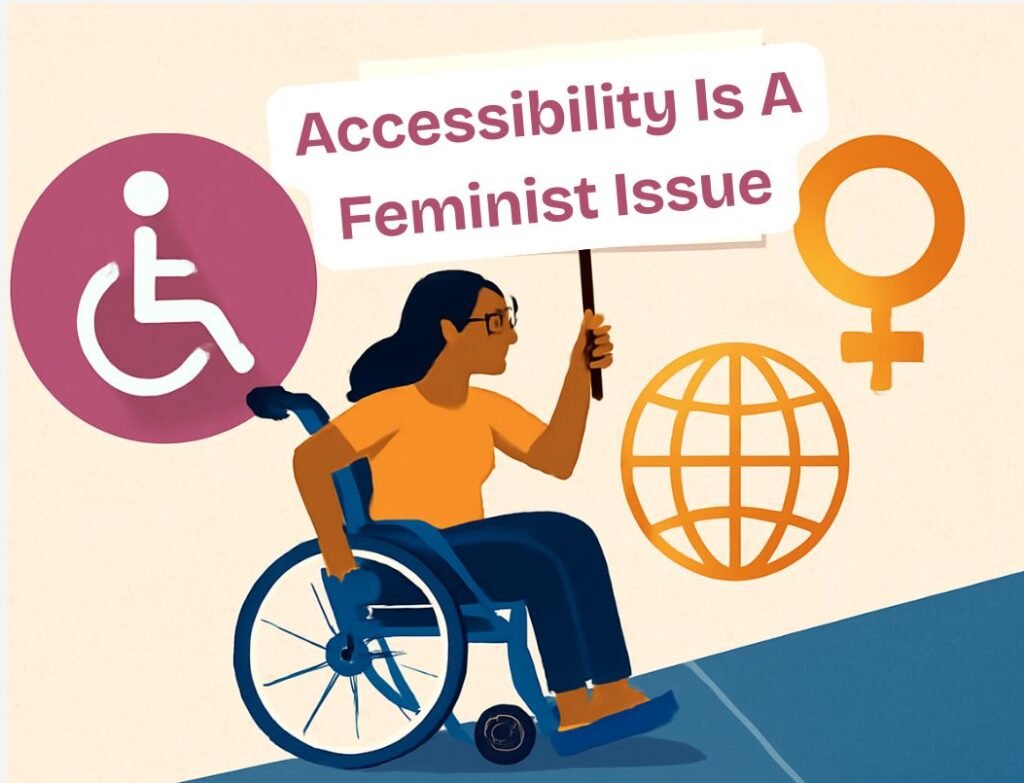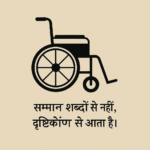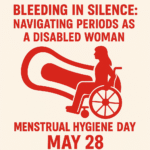Policy and Legal Framework: Progress and Gaps
India has made progress in disability rights over the years. The Rights of Persons with Disabilities Act (RPWD Act), in 2016, recognizes the rights of disabled persons to access public spaces, education, and work. Still, there are many gaps in the legal system when it comes to fulfilling the specific requirements of disabled women.
The RPWD Act and other rules, which emphasize disability in a broader sense, hardly take into account the gendered difficulties disabled women experience. Often disregarded, are problems including caring responsibilities, abuse, and lack of gender-sensitive accessibility legislation. Moreover, while the legislation mandates accessibility in buildings and transportation, enforcement differs and many disabled women still have challenges in their daily lives.
Disability Policy Calls for Feminist Advocacy
I am a disabled woman, consequently, I know that a policy enclosed inside the files by itself is insufficient. Disability policies have to be created and put into effect with feminist points of view included. Our unique needs are overlooked since the voices of disabled women are often excluded from decision-making processes. Feminist activism in disability policy is needed to ensure that our experiences are recognized and we are not left behind.
Laws that actively assist disabled women’s full involvement in society, instead of only recognising their existence, are much needed. This means creating inclusive educational institutions, accessible workplaces, and safe public spaces. It also implies ensuring women with disabilities equal access to social services, legal protections, and healthcare. Feminist campaigning can help to bring about these changes by supporting more inclusive, gender-sensitive policies that give disabled women’s experiences first priority.
Representation’s Purpose in Accessibility
One element of representation is visibility; another is power. It is impossible to overestimate the importance of representation in a country like India, where the voices of disabled women are routinely muffled. The media, politics, and leaders, including disabled women, convey a strong message about our value and the need for inclusive, easily accessible environments. Regretfully, most public life still shows an underrepresentation of disabled women.
The media often presents us as either invisible or defenseless victims. This absence of representation helps us to keep the belief that we cannot lead a full, meaningful life. Under-represented in political leadership roles, disabled women limit our capacity to advocate for the required changes. The lack of disabled women in decision-making procedures is one of the main obstacles in creating inclusive, accessible environments.
Accessibility and Representation Empowerment
First step towards empowerment is visibility. The story changes when we find women with impairments in political, corporate, or media leadership positions. It shows that we are capable of assuming responsibility and making decisions affecting the lives of others as well as ours. One example is the work groups and activists in India supporting the rights of disabled women. These groups are transforming by advocating inclusive policies, digital environments, and easily available infrastructure.
Representation also gives others power. Seeing leaders who share their limitations increases women with disabilities’ belief that change is achievable. It inspires us to fight for ourselves and for more accessibility for the coming generations of disabled women. Accessibility and representation cooperate to empower individuals and create environments more friendly to everyone.
Ultimately, a feminist necessity for a more easily accessible future.
Accessibility is about equality, dignity, and autonomy—not only about digital tools or physical ramps. Lack of accessibility is a kind of exclusion since it inhibits disabled women from completely engaging in society. In public spaces, online, and in policy systems, we are often left behind. Still, this offers a chance to create more inclusiveness in the world instead of only a difficulty.
When we advocate change in the realm of accessibility, we must take a feminist stance. We have to recognize the unique challenges disabled women experience, which demand better infrastructure, inclusive laws, and more representation. Adopting these measures depends on feminist advocacy to make sure disabled women are not left behind in the fight for equality.
Although still far to go, disabled women, supporters, and legislators may cooperate to build a society in which everyone—regardless of gender or ability—may live with equality and dignity. The first step is to ensure that accessibility is recognised as a feminist need as right now is the time for change.
FAQs
- What does accessibility mean in a feminist context?
Accessibility is about ensuring that everyone, regardless of ability or gender, can participate equally in society. In a feminist context, it means acknowledging and addressing the unique barriers that disabled women face in public spaces, digital platforms, and policies. - How does disability intersect with gender in India?
In India, disabled women face compounded discrimination based on both their disability and their gender. This intersection makes it harder for them to access education, employment, healthcare, and public spaces. - Why is digital accessibility important for disabled women?
Digital accessibility is critical because it gives disabled women access to vital information, social interaction, employment opportunities, and education. Without accessible digital platforms, many women are excluded from opportunities that could improve their lives. - What policies exist for disabled women in India?
The Rights of Persons with Disabilities Act (RPWD Act) offers protections for disabled individuals, but it does not adequately address the specific needs of disabled women. Gender-sensitive policies are necessary to ensure that disabled women are not overlooked. - How can disabled women’s representation help improve accessibility?
Representation in leadership roles helps bring attention to the unique needs of disabled women, ensuring that policies and infrastructure are designed with us in mind. It also empowers other disabled women to advocate for their rights and seek equal access to opportunities.



